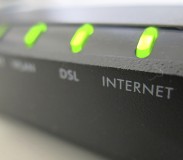
The Future of Cable TV

According to recent data, cable and satellite television is becoming less and less popular in homes across the United States. Today, 7.6 million households in America do not subscribe to cable or satellite television, a figure that has risen by 44% since 2010. For many, the reason is the cost. Cable television is paid through a monthly subscription that includes a package of different channels. The more channels you have access to on your television, the more you pay. As the cost of cable has risen 97% in the past 14 years, it’s no surprise that people are searching for cheaper options. Today, online streaming portals and subscription streaming accounts like Netflix, Hulu, and Amazon Prime are cheaper options compared to cable. They’re also the wave of the future.
History
Cable television was introduced in the United States in 1948. Free broadcast television, available to all households, was popular in the 1950s, before networks began to see the potential for profit that television could offer. In 1957, when 25 million American households tuned in for a musical screening of Cinderella, network executives realized that the broadcasting company might have made over $6 million dollars had they simply charged 25 cents for each television that tuned in. Years later, the modern cable subscription was introduced and television became an industry.
Predictions
Although cable and satellite television may stick around for a few years, on-demand subscriptions will eventually take over. Companies like Netflix and Hulu have seen enormous success in recent years, thanks to their low subscription fees and wide selection of both films and television shows, some of which cannot be seen elsewhere. Approximately 18% of all those who subscribe to on-demand television do not have cable subscriptions in their homes. This figure includes members of the Millennial generation, who grew up streaming their favorite television shows on the internet. Some Millennials will never pay for cable television in their lifetimes. For the younger generation, watching television on demand online is easier, cheaper, and more convenient than a cable subscription.
Pros and Cons
 Cable has its pros and cons. Cable television still includes excellent programming that cannot be found anywhere else. With cable, the viewer has less choice in what they can watch at any given time. Some viewers enjoy this while others prefer to watch what they want when they want through on-demand offerings. Another major downfall of cable television are advertisements and commercials. If you don’t want to pay for on demand cable television, you will end up spending twenty minutes watching commercials during an hour-long television show. For many, it just isn’t worth it. Online streaming companies offer television and videos that can be watched without interruption.
Cable has its pros and cons. Cable television still includes excellent programming that cannot be found anywhere else. With cable, the viewer has less choice in what they can watch at any given time. Some viewers enjoy this while others prefer to watch what they want when they want through on-demand offerings. Another major downfall of cable television are advertisements and commercials. If you don’t want to pay for on demand cable television, you will end up spending twenty minutes watching commercials during an hour-long television show. For many, it just isn’t worth it. Online streaming companies offer television and videos that can be watched without interruption.
Quick Wrap Up
Cable companies are in trouble. If the past increases are any indicator, the cost of cable could increase to $200 per month in five years. If that’s the case, cable may simply not survive. Today’s on-demand television subscriptions offer unparalleled selection, the convenience of watching TV when you want, and cheaper monthly subscription fees.







